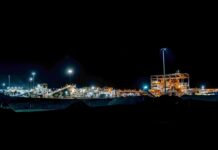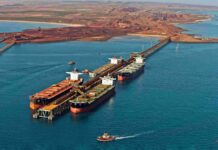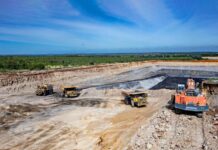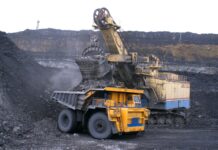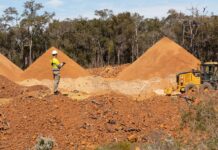Mining and resources sector on notice, 27,000 jobs on the line over 5 years

The Australian Resources & Energy Employer Association (AREEA) has identified 107 new projects, worth about $131b and creating almost 27,000 jobs over the next five years.
WA alone accounts for 48 new projects, or 44% of the investment pipeline, requiring at least 11,000 new workers by the end of 2029.
AREEA’s new report, Resources and Energy Workforce Forecast: 2024-2029, breaks down the estimated labour required to operate new, expansion and restarted mining and oil and gas projects, based on modelling of the Federal Department of Industry project data.
AREEA chief executive Steve Knott AM comments on this.
“Iron ore, coal and gas saw Australia’s export earnings reach a record $466b in the year to June 2023,” he said.
“The industry also contributes over $70b annually in taxes and royalties – and there is a great opportunity for this to increase.
“Without the contribution of Australia’s mining and energy projects, vital services such as Medicare, the NDIS, hospitals, schools and aged care would be deprived of critical investment.
Mining commodities retaining their traditional strengths include coal (13 projects for 4,836 workers), iron ore (eight projects for 4,495 workers), gold (13 projects for 2,830 workers) and critical minerals (14 projects for 3,078 workers).
Meanwhile, energy industry continues its mini-investment boom, with 19 prospective projects that could drive demand for 3,410 new operating phase employees by the end of 2029.
Mr Knott urges the Federal Government to maintain Australia’s attractive place to invest in new resources and energy projects.
“Approvals for major ventures such as the McPhillamys gold mine in NSW – which offered 1000 jobs (construction and production) and had the full support of the local community – are being pulled from underneath investors at the eleventh hour,” he said.
“All Australians should be concerned about what that means for their livelihoods and lifestyles.
“We cannot afford to stifle business and strangle the golden goose.”
Resources and Energy Workforce Forecast: 2024-2029 also reports that while the major project pipeline remains strong, the sector in May 2024 directly employed 287,600 people, which was 35,300 or 11% fewer than the historic high (322,900) of May 2023.
Most of the losses were in WA where the sector directly employs 144,900 West Australians, a decrease of 31,000 employees (-17.6%) from 175,900 in May 2023, and the industry’s lowest WA direct workforce since 2021.
Nonetheless, WA remains the powerhouse of Australia’s resources and energy industry, with the State’s major projects expected to increase the workforce by 11,065 workers by 2029.
Mr Knott said the WA pipeline was still “diverse and prosperous” with 11 energy (gas, LNG and oil) projects driving $55.7b or 66% of total investment over the next five years.
Of 37 mining projects, iron ore will spur demand for 2,095 workers, led by Southdown, Western Range and Lake Giles – all by the end of 2026.
Seven gold projects, including Hemi gold and the KCGM Mill Expansion, should see nearly 1,700 new workers needed by the end of 2027.
While lithium potential (seven projects, 970 workers) has eased, it will together with other critical minerals and rare earths (seven projects,1,000 workers) continue to support a buoyant labour market.
Four copper projects – with West Musgrave the jewel in the crown – will require around 1,200 workers by the end of 2026.
A range of other minerals, including nickel, cobalt and alumina, make up eight projects requiring about 1,500 workers across the forecast period.
Meantime, NSW has cemented its position as the nation’s second-most attractive destination for resources and energy investment capital.
The report shows 18 projects are forecast to create demand for 5,152 new production employees in NSW by the end of 2029 – an increase of 800 on last year’s figures and over 1,600 more than Queensland’s current projections.
“That data shows Queensland is slowly but surely losing its investment edge and being well overtaken by NSW,” Mr Knott said.
“In 2022, this report forecast 5,560 new jobs in Queensland’s major project pipeline.
“In 2023, the figure was 4,470, and this year, just 3,527.
“There can be no doubt the Queensland Government’s intransigence over its decision to massively increase coal royalties has taken a toll on investor confidence in the state across the sector.
“It’s yet another signal to all governments that ill-advised and short-sighted policy settings can seriously risk the strength and significant contribution of Australia’s resources and energy industry.”






